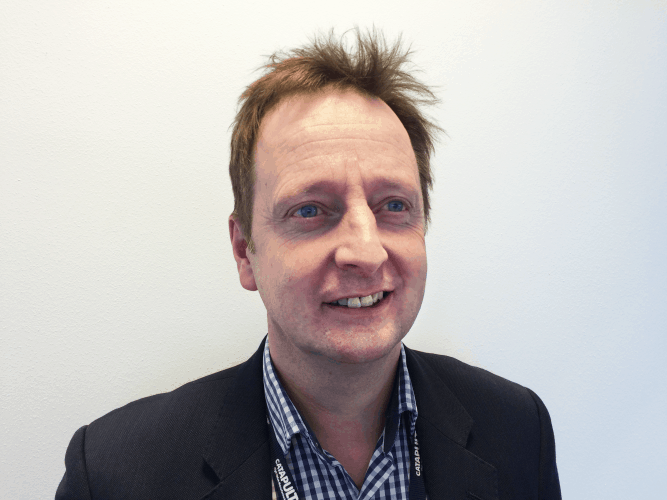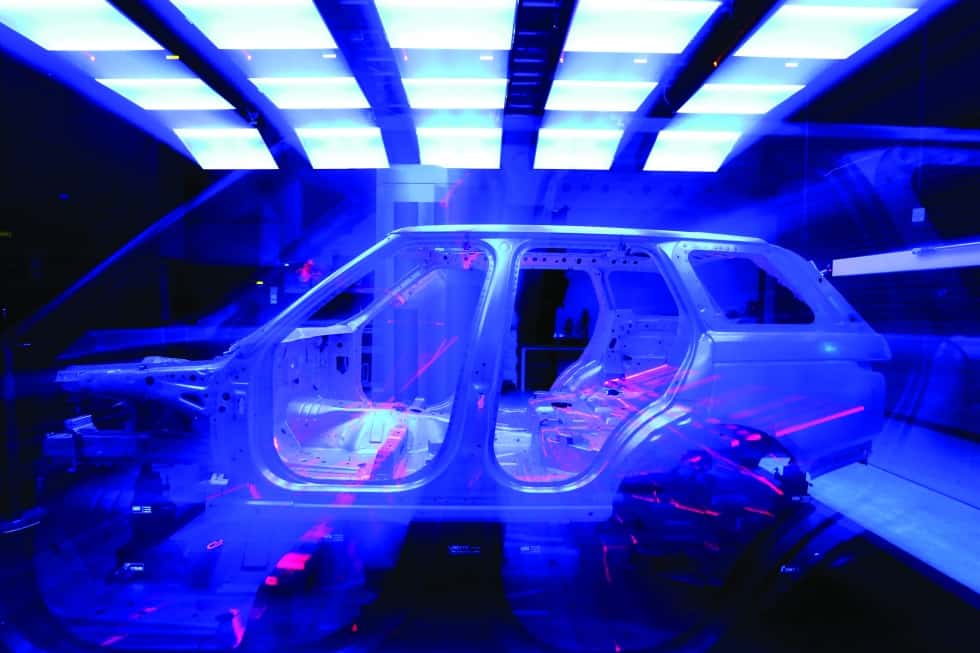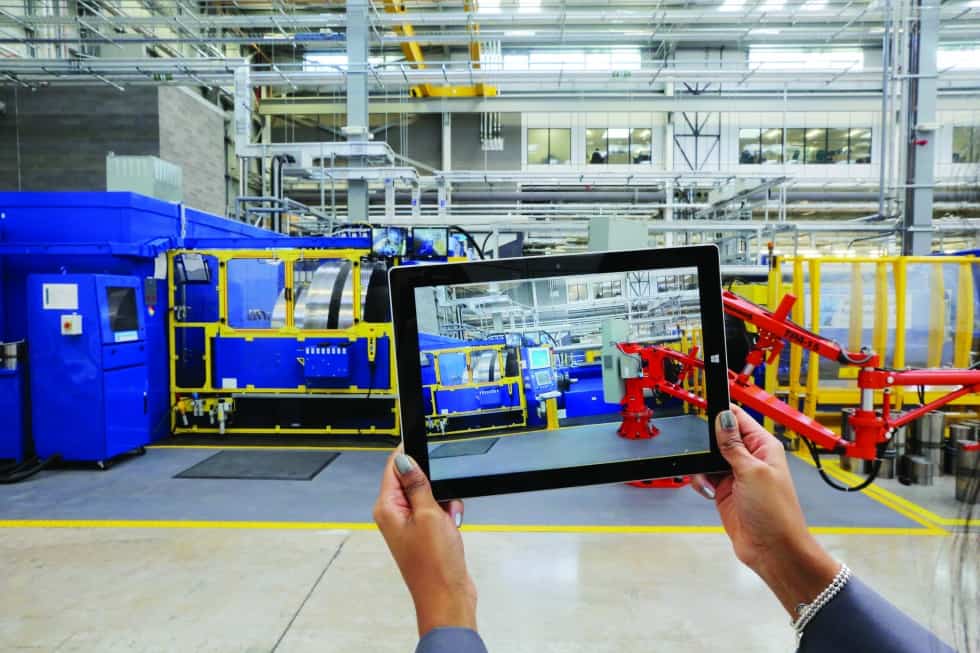Whether it’s being criticised for a lack of long-term vision, or slammed for failing to support fledgling technologies, the UK government typically gets a pretty rough ride from industry and possibly rightly so.

One of the notable exceptions to this in recent years has been the establishment of the Catapult Centres, a network of organisations designed to help innovations from a variety of sectors fulfil their economic potential.
The most established of these, the High Value Manufacturing (HVM) Catapult, which this year celebrates its fifth birthday, has enjoyed particularly notable success: today boasting over 1,500 paying members, and, according to a recent economic impact assessment, generating £15 for every single pound of investment. Dr Phill Cartwright, the centre’s newly appointed chief technology officer, has bold plans to build on this in the months and years ahead.
A veteran of the aerospace and power sectors, with key roles at Rolls-Royce, ABB and Alstom under his belt, Cartwright joined the HVM Catapult in November 2015 from construction giant Laing O’Rourke, where, as director of the engineering excellence group, he was charged with applying the lessons learned in industry to the construction sector.
He achieved some notable successes in this role. The City of London’s distinctive Leadenhall Building, aka the cheese-grater, was built ahead of schedule thanks to the heavy use of off-site construction techniques (85 per cent of the building was produced in factories). The Manchester Metrolink, another project in which he had a hand, was also completed early, thanks in no small part to the use of virtual design and production techniques more commonly associated with the automotive industry.

And as the HVM Catapult charts a course for the future, Cartwright’s experience applying lessons learned in one sector to the challenges faced by another will be a key asset.
“From an innovation and technology perspective, UK manufacturing is held in high respect all over the world. I think the area where we’ve lacked in the last 10, 20 or 30 years is turning our great ideas and innovations into GDP and growth,” he told The Engineer. And while the HVM Catapult has arguably done a pretty good job of addressing this famed shortcoming, Cartwright believes it can become even more effective if the seven different centres that make up the Catapult can be encouraged to work in a more joined-up way.
“I think it’s widely recognised that the Catapults have been successful,” he said. “But I think it’s also been recognised in the HVM that while we have seven centres all doing extremely well there isn’t necessarily a technical strategy at various levels that maximises the benefits of pulling those centres together.”
A more joined-up approach should, Cartwright added, enable technologies to flow more rapidly between different sectors. “Automotive is now investing heavily in hybrid drives and autonomous vehicles. That technology is finding its way into next-generation cars very quickly. It will not find its way onto aerospace programmes for at least five to 10 years. Taking an over-arching view of all the centres and the cross-sector attributes means we can get those technologies into aerospace much sooner, to the benefit of the industry partners and to society as a whole.”

A big challenge is encouraging this collaborative process without being too proscriptive, and one of the keys to achieving this, he said, is the centre’s technology officer’s forum, where representatives from each of the centres work together to identify cross-centre opportunities.
Once you start working like this, he said, a host of untapped opportunities begin to emerge: from the advantages of applying lean, safety-critical aerospace processes to the civil sector, to the ways in which fringe innovations such as new non-invasive surgical techniques could benefit the aerospace sector. “There wasn’t a mechanism to do that before, other than by accident.”
Imagine you were building a nuclear power station in the virtual world. On a £23bn project that would provide absolute certainty on the project and increased safety
One particularly promising area of expertise with real cross-cutting potential is, he said, digital engineering, and there’s a major focus within the centre on how the kind of virtual design and production approaches developed for the automotive sector (where every aspect of a car’s design and the processes used to make it are planned in detail before anything’s built) could be used to improve safety and quality across a range of sectors.
“Imagine applying that process to big infrastructure build,” said Cartwright. “Imagine you were building a nuclear power station in the virtual world, with all of the supply chains, three or four years before you stick a spade in the ground. On a £23bn project that would provide absolute certainty on the project and increased safety.”
Such an approach could also have a transformative effect on the home-building sector, he claimed. “You don’t buy a car expecting a load of blokes in white coats to come and tinker with it for the next six months. But if you buy a house today you’ll spend the next six months with builders turning up finishing the thing off. You don’t know what the performance is in terms of energy rating, but you know how much fuel your car’s going to use. We’re looking at how do you take those lessons learned in aerospace and designing in that virtual world, and apply it to house building.”
In a related project, the centre is also looking at using processes developed in jet-engine manufacture to improve the efficiency of hospitals.
Cartwright explained how with the help of the Sheffield Advanced Manufacturing Research Centre (AMRC) – one of the members of the Catapult Centre – Rolls-Royce has changed its business model to the point where almost half of its revenues are from the services market. “They put sensors and diagnostic techniques on an engine, which our centres have been helping them with – they know where every one of their engines is in the world, how hot it is, how fast it’s spinning and they’re able to trade that service.”
Applying the same approach to the construction and operation of hospitals could, he claimed, help make hospitals vastly more efficient. “If you took a similar approach and put diagnostics into the design and build process you could knock out at least 30 per cent of their operating costs.”
We lead the world in a lot of areas, but to be successful we need to invest in the long term
As well as ensuring the centre exploits the full value of all of its parts, another key aspect of Cartwright’s role is helping government understand the economic potential of manufacturing technologies. And a particular priority is encouraging an appreciation of the importance of long-term planning: not a concept that sits naturally with a short Westminster career. “I think we lead the world in a lot of areas, but to be successful we need to invest in the long term,” he said. “This is not something you do on a 12-month by 12-month cycle. Look at Rolls-Royce: its success is all about developing a single crystal alloy that took 25 years to develop from its original investment.
“Where we’re weak is we don’t have consistent funding mechanisms, policy and infrastructure that supports long-term investments. In Singapore, China and the US, for example, the thinking is more long term, but in this country the public focus is too short term. Part of my role is to put together examples to show where investing in the long term will generate a significant uplift for the UK.”
Since we’ve invested in catapults we ought to use the wisdom of that to focus innovation in the UK energy sector
Nevertheless with the government’s most recent comprehensive spending review increasing funding for the HVM Catapult, Cartwright is optimistic that there’s an appetite for dialogue: “It’s positive and they’re listening. The challenge is to keep that focus on the long term.”
In the longer term, he also sees some significant potential in encouraging the different catapult centres to work together. Such collaborations could, he said, be key in helping address some of the UK’s most pressing problems, such as fears over energy supply. “The lights are not going to go out this year – we hope – but we are getting quite close. We haven’t allowed for successful collaboration and innovation in energy market over last 20 years; since we’ve invested in catapults we ought to use the wisdom of that to focus innovation in the UK energy sector as well.”
Career History - Dr Phill Cartwright
Cartwright recently joined the HVM Catapult from Laing O’Rourke, where he was director of the Engineering Excellence Group and has a track record of senior roles in advanced engineering, including five years as head of electrical power and control systems at Rolls-Royce.
He previously set up and was the chairman of the IET Power Sector Executive and has been an adviser to the UK’s Nuclear Industry Council and the industry sub-group of The Nuclear Innovation Research Advisory Board.




Collaboration to address viable solutions for VAWG database
<blockquote>address the lack of standardisation, coordination, and collaboration of gender disaggregated data intelligence across various regions,...